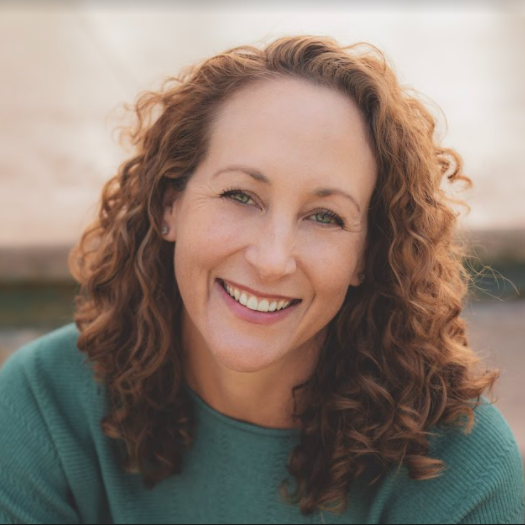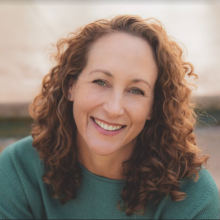Allied Legal Professionals and the Legal Service Ecosystem
 In November 2022, IAALS hosted a convening of subject-matter experts to review and provide feedback on its report, The Landscape of Allied Legal Professional Programs in the United States, prior to publication. Paraprofessionals, court leadership, and bar leadership from states that have adopted allied legal professional (ALP) programs joined the convening, along with faculty from legal education institutions and experts involved in paraprofessional programs in Canada. Over the course of two days, attendees reviewed the building blocks of ALP efforts, discussed lessons learned, and provided insights into strategies for advancing the ALP movement.
In November 2022, IAALS hosted a convening of subject-matter experts to review and provide feedback on its report, The Landscape of Allied Legal Professional Programs in the United States, prior to publication. Paraprofessionals, court leadership, and bar leadership from states that have adopted allied legal professional (ALP) programs joined the convening, along with faculty from legal education institutions and experts involved in paraprofessional programs in Canada. Over the course of two days, attendees reviewed the building blocks of ALP efforts, discussed lessons learned, and provided insights into strategies for advancing the ALP movement.
As the landscape report reflects, the ALP programs in early adopter states have several important commonalities. Generally, states adopt ALP programs with the goal of expanding service capacity in practice areas underserved by lawyers. ALP programs have taken hold in early adopter states through the extensive efforts of local leadership championing the need for tiered legal services. These programs are primarily built around existing paralegal education and training infrastructures, in recognition of the existing skills and strengths of paralegals.
States balance the need for additional training and certification against the size and capacity of the potential applicant market. States have also carefully designed ALP programs to avoid practice areas that would bring about the strongest opposition within the legal community. Based on the common work of existing ALP programs, IAALS’ report identifies several important building blocks for states to consider as they design ALP programs:
• Practice areas for ALPs
• The breadth and scope of ALP services
• Eligibility requirements for ALPs
• Education requirements for ALPs
• Training and testing for ALPs
• Ethical requirements for ALPs
• The role of attorney supervision in ALP services
• The ability of ALPs to have an ownership interest in law firms
ALP programs have the potential to diversify the legal services market and create more cost-effective legal service models. The Legal Paraprofessionals (LPs) graduating from the University of Arizona’s LP Program are 69 percent female and 56 percent racial minority. Washington Limited License Legal Technician (LLLT) services averaged half the cost of lawyer services before the LLLT program was shuttered. (IAALS Report, Page 54). But one key theme that emerged from the November convening is that there is much to learn from the ALP efforts of early adopter states that can—and should—inform the design and launch of emerging ALP programs.
Some attendees noted that ALP programs may have focused too narrowly on building up the capacity of existing paralegals, to the exclusion of other potentially qualified applicant types. Enrollment in ALP programs has been relatively low, suggesting that education, training, and cost expectations are too high. As Innovation for Justice has reported, the education and training requirements of the LP programs in Arizona and Utah present barriers to entry for the nonprofit social service community. Also, passage rates for ALP exams have been low; attendees discussed a need for more alignment between the skills and knowledge of ALPs and ALP testing format.
Overall, ALP programs have closely followed traditional legal education and legal service structures. The assumption that ALPs should be trained and certified in a modified version of how lawyers are trained and certified creates a risk of building a new service model that embeds old legal service problems into new regulation. It also holds ALP programs back from providing an opportunity to radically reimagine the pathways for connecting all community members with civil justice needs to civil justice problem-solving.
Which leads to the second theme that emerged from the November convening: the access to justice goals of regulatory reform are only partially served by ALPs, and ALP programs should be created as an important part of a broader legal service ecosystem. As the IAALS report notes, “States often begin looking into ALP programs to decrease the access to justice gap. With this goal in mind, the rate of self-representation is one of the major considerations for states when choosing practice areas.” (Page 19).
To date, states with ALP programs have focused on ALP practice areas on family law, landlord-tenant, and consumer debt. (Page 20). But in most courts in the United States, landlord-tenant and consumer debt cases have not only high rates of self-representation, but are also the case types in which defendants have little to no ability to pay for legal help. ALP programs that train and certify ALPs to provide legal help for these types of legal issues need to acknowledge that a market-driven solution is likely to fail in these spaces. Instead, states considering regulatory reform need to examine how alternative legal service providers in the nonprofit sector can be empowered to know and use the law for the benefit of the low-income community.
This is the community justice worker service model that Innovation for Justice advocates for in its report, Leveraging Regulatory Reform to Advance Access to Justice. i4J’s research explores how low-income community members can be helped by non-market driven legal service innovation: specifically, building the bench of those in the nonprofit social service sector equipped to engage in preventative civil justice problem-solving. Attendees at IAALS’ November convening agreed that ideally, states would create regulatory systems in which lawyers, ALPs, and community justice workers would work together to triage consumers by need and income status, to provide more comprehensive and holistic approaches to civil legal services.
With 16 states in some stage of ALP program development, there may be enough momentum for ALPs to become a new and lasting component of legal service delivery in the United States. Now is the time for states considering regulatory reform to learn from the ALP efforts of the early adopter states and to consider how regulatory reform can advance an ecosystem of legal services—lawyers, ALPs, and community justice workers—for the benefit of all community members.



